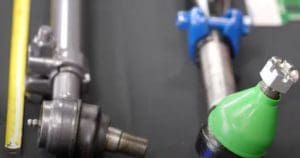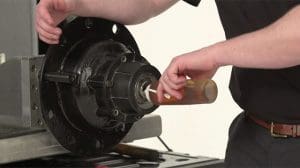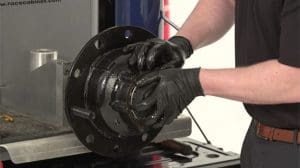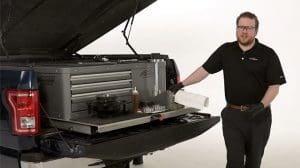According to the American Trucking Associations (ATA), the largest national trade association for the trucking industry, there’s currently a shortage of more than 78,000 truck drivers on the roads daily. Even worse, the ATA also estimates a need to hire around 1.2 million new drivers over the next decade to meet increasing freight demands, and to replace those leaving trucking either through retirement or other reasons.
It’s not something to take lightly, however, there’s still hope. If anything, the situation serves as a good opportunity for fleet managers to connect with their mechanics and technicians to find ways to better support their drivers. It also highlights the importance for fleets to stay proactive in providing the right kinds of training opportunities to prepare for the road ahead.
Mark S. Allen, President and CEO of International Foodservice Distributors Association (IFDA), said it well: “The last three years have proven just how important truck drivers are to the American economy and way of life, and how urgently we need to develop a pipeline of qualified, well-trained professional drivers to meet our nation’s growing freight needs.”
Growing the workforce
The ATA calculates this current shortage estimate by comparing the difference between active drivers in the market now, and the optimal number of drivers based on freight demand. Although a solution seems pretty straightforward—just hiring more drivers—it’s much deeper than a numbers game.
In fact, ATA Chief Economist Bob Costello says that at the heart of the shortage is this dire need for qualified drivers:
“Carriers repeatedly say it isn’t that they don’t have enough applicants for their open positions—they do. What they do not have is enough applicants who meet the demanding qualifications to be hired. In some cases, carriers must reject 90% of applicants out of hand because they fail to meet at least one of the prerequisites to drive in interstate commerce.”
In other words, rising to meet this current challenge will require a significant investment in technology, training, and safety in order to meet recruitment and retention demands.
Equipping the workforce
When it comes to the need for finding “qualified” drivers or workers, it’s clear that companies will have to prioritize training initiatives that can attract and retain younger and up-and-coming talent. Added to this challenge is the reality that age is now a contributing factor to the present shortage as well. In fact, the U.S Bureau of Labor Statistics estimates that the average American truck driver is 55 years old, which presents another puzzle for companies to solve: Can fleet owners and managers launch a collaborative effort with their seasoned drivers to make the most out of this situation and provide the necessary mentorship, guidance, and support to the next generation of workers?
Attracting and Retaining Skilled Drivers
While training opportunities are a powerful draw, companies can also attract drivers depending on the quality of components and equipment offered. Drivers are more likely to choose companies that invest in newer fleets to provide their drivers reliable parts and machinery. By prioritizing the maintenance and upkeep of their trucks, companies can ease any concerns drivers may have over frequent repairs or potential future mechanical issues. When comparing available options, that’s one way to make your fleet stand out from the competition.
Secondly, companies that invest in tech and smart data solutions—such as electronic logging devices (or ELDs)—offer their drivers and workers more efficient and streamlined operations. These products can help track most day-to-day activities for drivers, while also monitoring key maintenance milestones for fleet vehicles. Choosing to implement steps like these can eliminate a lot of extra paperwork for drivers and mechanics alike.
Our STEMCO Vehicle Technology (SVT™) products use smart technologies to simplify maintenance procedures, streamline data collection, and improve overall fleet safety. DataTrac® SVT™ hubodometers send a Bluetoooth signal that is read either by a fixed GateReader in the fleet’s yard or by the Fleet Manager application on a mobile phone. This eliminates the mistakes that often occur when collected by hand—a tedious method prone to human error, which can prove data unreliable and even lead to greater problems down the road.
STEMCO U: Our Commitment to Training
At STEMCO, we work hard to provide top-tier training as part of our commitment to Making The Roadways Safer®. As modern trucking components and systems become more complex, and as the need to protect against liabilities becomes more critical, STEMCO strives to provide the industry valuable learning opportunities. STEMCO U is our in-house, online training program designed to meet the growing needs of the commercial vehicle market. Although our content is geared more toward mechanics and technicians versus drivers, we believe that if technicians are trained better, they’re more equipped to keep trucks running more smoothly, which is a direct benefit to drivers.
Here’s a brief description of our offerings:
- Online video courses covering a wide range of topics, from product installation to maintenance and efficiency optimization.
- Learn at your own pace, on your own time, from anywhere in the world.
- Track your progress and receive printable, personalized certificates of completion upon passing courses.
- STEMCO U was developed to help meet the growing demand for accurate and reliable information on proper installation and maintenance procedures.
Contact Us
This is a complex issue that our industry is facing, and it’s one we take to heart. The best thing you can do is stay proactive and work on deepening the tools, benefits, and training opportunities your business can offer during this time to help prepare for the road ahead. If you have questions, or if you’d like to learn more about what we have to offer through STEMCO U, don’t hesitate to contact us.









